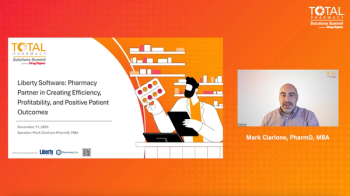
The Dangers of Texting Medical Orders
What might seem like a convenient option has led to serious errors.
Texting medical orders is convenient and fast, but the practice can also be dangerous.
A survey conducted by the Institute of Safe Medication Practices (
Related article:
Technology-savvy proponents of texting who responded to the ISMP survey point to its popularity, convenience, workflow synergy, and speed, and to the perception of similar risks with other forms of communicating orders. Some respondents said that while texting medical orders is not as safe as electronic prescribing, it may be safer and timelier than verbal or telephone orders.
ISMP Responds
However, ISMP disagreed, asserting that verbal or telephone orders can be read back to ensure accuracy and understanding, and because most practitioners who responded to the survey are texting orders via standard cell phones or devices without encryption or critically important safety features.
ISMP acknowledged that other forms of communicating medical orders carry some of the same risks as texting orders. The informal nature of texting orders, often done without a known policy or procedure associated with the process, has resulted in uniquely alarming risks, including abbreviated language, improper autocorrection, and orders without full patient names and a second unique identifier to offset some data security concerns.
The institute concluded that texting medication-specific orders should not be allowed until the safety issues have been identified and resolved, along with the development of vetted industry-wide clinical guidelines that can be used to ensure standardized, safe, and secure texting processes. Leadership must establish and communicate policies on the texting of orders and take a strong stance on avoiding texted medication-specific orders at this time, until they can be safely introduced into health care through careful pilot testing and implementation plans, it concluded.
At the present time, there aren’t controls in place to assure patient safety, there is a lack of clinical decision support when using electronic medical records, and a lack of transfer of information directly into a patient’s electronic health record, said Mike Cohen, RPh, President of ISMP. “Although HIPAA-compliant texting devices and software are available, these are not always used, so we also have concerns about privacy. Our survey revealed evidence that in many cases personal cell-phone devices are being used for texting of orders rather than devices that encrypt messaging.”
Some devices autocorrect spelling, which can change words, including drug names, he added.
Use of abbreviations commonly used in texting, like “2day” for “today,” can be misunderstood as “two a day.” Voice messaging is another problem, because the wording can be changed. Not everyone reviews a message to correct any misinterpretations before it is sent.
While texting is more convenient and instantaneous, Cohen said that some people compare it to telephone orders, which they say are also not safe. “They certainly have their own problems, but telephone orders can be read back to ensure accuracy and understanding,” he said. “Also, most practitioners who responded to our survey are texting orders via standard cell phones or devices without encryption or critically important safety features.” Texting does provide documentation of what transpired, unlike documentation of a telephone order, he noted.
Up next: More examples of mistakes
The Survey
Fifty-three percent of the study’s respondents told ISMP that that texted medical orders were not allowed per policy in their facility. The remainder said there was no policy on the topic (19%) or that they were uncertain whether a policy existed.
The majority of respondents reported a high level of concern about potential risks associated with texting medical orders (Table 1). Medication/patient safety officers, risk/quality managers, and nurses were more concerned about the potential risks associated with texted orders, while physicians were least concerned about them.
More than half of all respondents felt that these risks, along with failure to retain or document the text message and the inability to authenticate the sender or receiver, were of the highest concern. The risks they were least concerned about included a delay in receipt or transcription of texted orders and the lack of prescriber clinical decision support while texting. Many respondents said that nurses who enter a texted order into the prescribing system, and pharmacists who verify the order should receive any alerts and clarify the orders if concerns arise. However, other respondents noted that the lack of decision support when prescribing could potentially lead to unnecessary variation in practices and transfer responsibility for the correctness of the order from the prescriber to the nurse or pharmacist.
Seven percent of all respondents said they were aware of errors or close calls that occurred involving a texted order. While this may not be an excessive amount of errors, those described by respondents were primarily associated with types of risks described, some of which are unique to texted orders (Table 2).
Texting is definitely going to continue, said Cohen. “It is widely used already and unlikely to stop. And there are many things that can be done safely back and forth, such as certain types of non-medication orders and clarifications. We are just saying that at least for medication transactions it’s not ready for prime time.”
“Leadership must establish and communicate policies on the texting of orders and take a strong stance on avoiding texted medication-specific orders at this time until they can be safely introduced into health care through careful pilot testing and implementation plans,” Cohen said.
Newsletter
Pharmacy practice is always changing. Stay ahead of the curve with the Drug Topics newsletter and get the latest drug information, industry trends, and patient care tips.











































































































































































































